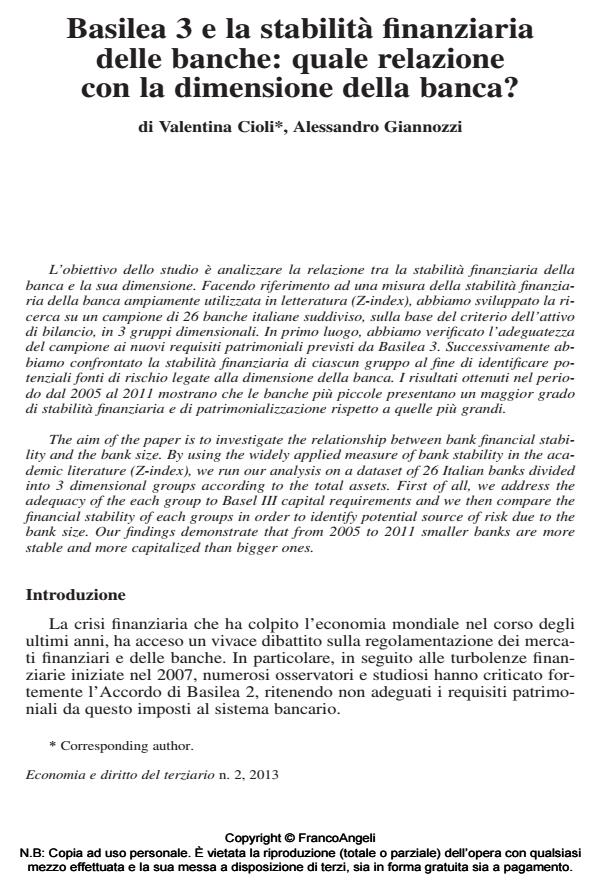Basilea 3 e la stabilità finanziaria delle banche: quale relazione con la dimensione della banca?
Journal title ECONOMIA E DIRITTO DEL TERZIARIO
Author/s Valentina Cioli, Alessandro Giannozzi
Publishing Year 2014 Issue 2013/2
Language Italian Pages 26 P. 261-286 File size 2149 KB
DOI 10.3280/ED2013-002005
DOI is like a bar code for intellectual property: to have more infomation
click here
Below, you can see the article first page
If you want to buy this article in PDF format, you can do it, following the instructions to buy download credits

FrancoAngeli is member of Publishers International Linking Association, Inc (PILA), a not-for-profit association which run the CrossRef service enabling links to and from online scholarly content.
The aim of the paper is to investigate the relationship between bank financial stability and the bank size. By using the widely applied measure of bank stability in the academic literature (Z-index), we run our analysis on a dataset of 26 Italian banks divided into 3 dimensional groups according to the total assets. First of all, we address the adequacy of the each group to Basel III capital requirements and we then compare the financial stability of each groups in order to identify potential source of risk due to the bank size. Our findings demonstrate that from 2005 to 2011 smaller banks are more stable and more capitalized than bigger ones.
- Corporate governance and performance: A study of the reform of cooperative credit system in Italy Elena Bruno, Giuseppina Iacoviello, in Corporate Ownership and Control /2020 pp.370
DOI: 10.22495/cocv18i1siart11
Valentina Cioli, Alessandro Giannozzi, Basilea 3 e la stabilità finanziaria delle banche: quale relazione con la dimensione della banca? in "ECONOMIA E DIRITTO DEL TERZIARIO " 2/2013, pp 261-286, DOI: 10.3280/ED2013-002005